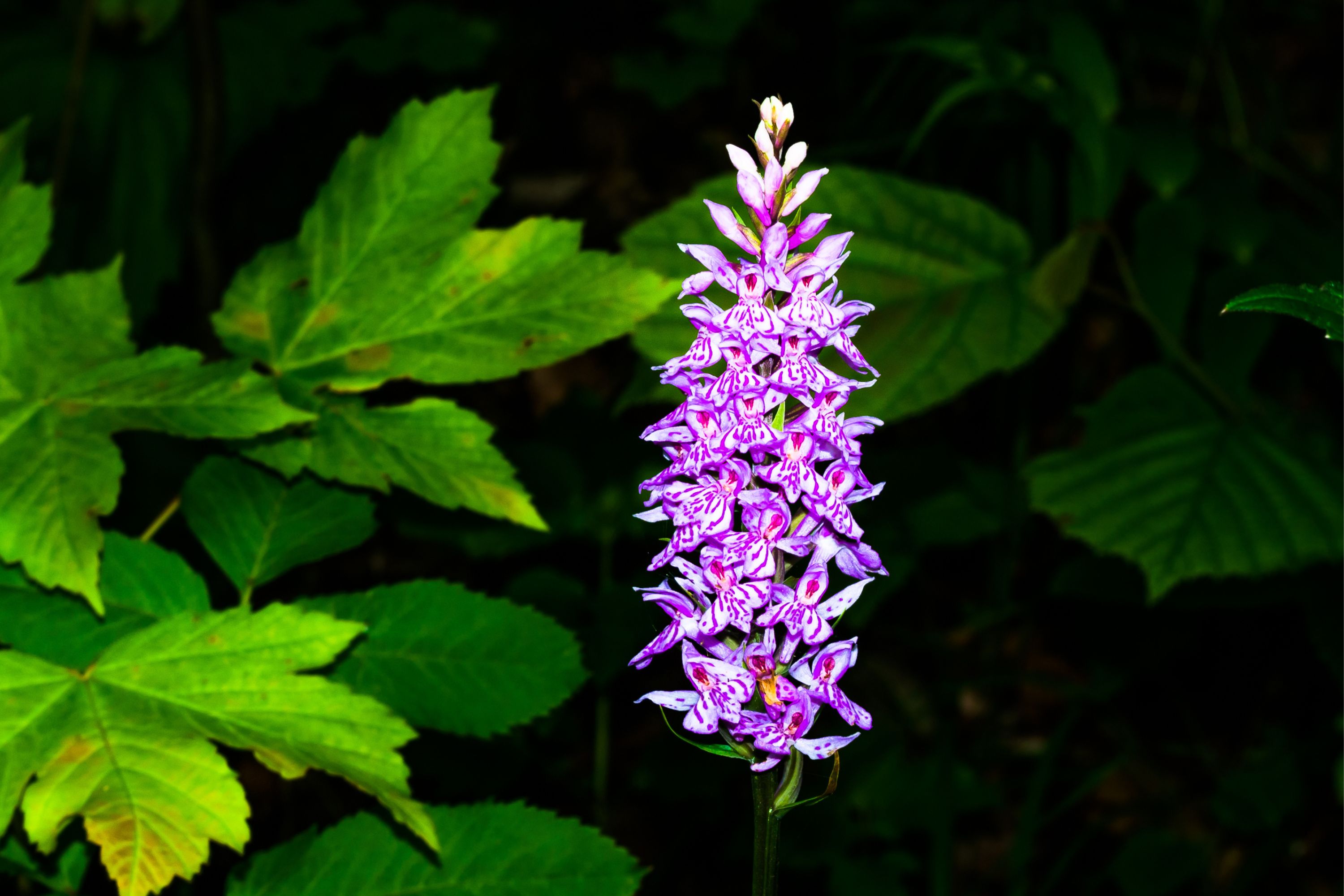Fragrant orchid
(Gymnadenia conopsea)

Description
Gymnadenia conopsea, commonly known as the fragrant orchid or chalk fragrant orchid, is a herbaceous plant of the family Orchidaceae native to northern Europe. The name of the genus Gymnadenia is formed from Greek words γυμνός (gymnós, "nude") and ἀδήν (adēn, "gland") and refers to the characteristics of the organs for secreting nectar. The specific Latin name "conopsea" derives from the Greek κώνωψ (kónops), literally meaning "mosquito-like", probably because of the similarity of the long spur of the flower with the mouthparts of a mosquito. The scientific binomial name of this plant was initially Orchis conopsea, proposed by the Swedish naturalist and botanist Carl von Linné (1707–1778) in his Species Plantarum of 1753. The name has been subsequently amended to the one currently accepted (Gymnadenia conopsea), by the British botanist Robert Brown (1773–1858) in 1813. In German, this plant is called Mücken-Händelwurz or Mücken Nacktdrüse; in French, is called gymnadénie moucheron or orchis moucheron; in Italy, it is called manina rosea ("pink hand"); in Croatian, it is known under mrežasti vranjak. Gymnadenia conopsea reaches on average 20–60 centimetres (7.9–23.6 in) of height, with a maximum of 80 centimetres (31 in). These plants are tuberous geophytes, as they bring their buds in underground tuber, organs that annually produce new stems, leaves and flowers. These orchids are "terrestrial" because unlike "epiphytic" species, they do not grow on other plants of major sizes. The stem is leafy and robust, with a striated surface. The leaves are long, narrow and lanceolate and vary from 3 to 7. The leaf color is gray-green. Size of leaf: width 1 to 2 cm, length 10 – 25 cm. These orchids have two ovoidal bulbs, deeply webbed and with many small and short lobes. Size of tubers: 1 to 3.5 cm. The inflorescence is 5–25 centimetres (2.0–9.8 in) long and it is composed of flowers gathered in dense cylindrical spikes (up to 50 flowers per spike). These inflorescences are scented and genes underlying eugenol (a volatile scent compound) production have been identified in Gymnadenia conopsea, G. odoratissima and G. densiflora. The flowers are petiolated, placed in the axils of long bracts and reach on average 0.8–1.4 centimetres (0.31–0.55 in). They have a distinctive three lobed lip and long spurs. Their light scent is similar to cloves. Their colors vary from white and pink to pink-purple, more rarely white.
Taxonomic tree:







